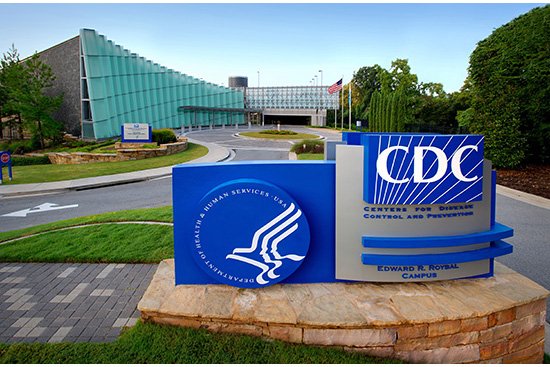The Centers for Disease Control and Prevention updated their sailing order on Friday. The revised list includes some new ports of call, as well as a few surprises like the Caribbean island of Tortola in British Virgin Islands, which has been added to both the Western Hemisphere and Eastern Hemispheres.
After the CDC released its new sailing order, some of these changes are surprising to many people.The “cdc no sail order update 2021” is a surprise from the CDC. The agency has updated their sailing order to include more destinations in the United States.
The US Centers for Disease Control and Prevention amended and extended its Framework for Conditional Sailing Order through January 15, 2022 on Monday, including several major changes that might allow cruise companies additional operating freedom in the coming months.
For the first time, the organization offered us a detailed look into the cruise industry’s preparation and COVID-19 incidents throughout the summer, when ships started sailing from U.S. ports for the first time in over a year.
(Photo courtesy of the Centers for Disease Control and Prevention)
Let’s take a peek inside the new CSO and see some of the most important facts and upgrades.
Since late July, the CDC has identified six “large” outbreaks.
For the first time, the CSO extension provides information on six “significant” COVID-19 occurrences aboard cruise ships since passenger sailings started in late June, according to the CDC.
Despite the absence of a ship or cruise company name, the reports provide fascinating insight into the circumstances aboard.
- On July 24, one symptomatic passenger who tested positive for COVID-19 was epidemiologically related to 20 other instances of the virus, including 18 crew members and 2 passengers, spanning two journeys. The vaccination rate aboard “Cruise Ship A,” as the CDC refers to it, was 99.8–100% for staff and 96.4–97.5 percent for guests.
- Between July 24 and August 28, the “Cruise Ship B” reported 58 COVID-19 cases that were verified in the lab. Passengers’ immunization rates varied from 96.8% to 97.7%, while staff vaccination rates averaged 100%.
- Three symptomatic guests tested positive for COVID-19 on the “Cruise Ship C” from July 29 to July 31. Additional passengers and staff members who tested positive were located via contact tracing. Vaccinations were given to all staff members and 97 percent of passengers.
- Seven laboratory-confirmed cases of COVID-19 were detected in passengers and personnel onboard the “Cruise Ship D” between July 26 and August 6. 100% of the staff was vaccinated, as were 96.8%–97.7% of the passengers.
- A total of 105 guests and staff members onboard “Cruise Ship E” had laboratory-confirmed COVID-19 infections from August 19 to September 7. Vaccination was given to all crew members and an average of 97 percent of passengers on all cruises.
- During four trips between August 21 and September 7, the “Cruise Ship F” reported a total of 112 laboratory-confirmed COVID-19 cases among passengers and staff. On all four sailings, every passenger and staff member was fully vaccinated.
Between June 26 and October 21, the CDC received reports of 49 hospitalizations and 38 medical evacuations from cruise ships due to COVID-19.
While a single case of COVID-19 on a cruise ship is alarming, the number of “large” outbreaks, hospitalizations, and evacuations reported by the CDC appear to be insignificant when compared to the hundreds of thousands of passengers who have taken a cruise vacation in the four months since sailings resumed.
Passengers are Making False Claims About Their Illnesses

Several guests with COVID-19 symptoms at the time of embarkation or who became sick during their trip did not promptly report their symptoms to the medical facility, according to the CDC.
Due to the expected length of time between the initial beginning of illness and the vast number of persons they may have come into touch with, considerable contact-tracing was required.
According to the CDC, a passenger on the “Cruise Ship F” was completely vaccinated and tested negative for COVID-19 three days previous to boarding, but became symptomatic once on board.
When he boarded the ship, the traveler denied experiencing any symptoms and died three days later from a COVID-19-related disease. The CDC only mentions one COVID-19-related mortality in the CSO extension.
The cruise company took substantial procedures as a consequence of this passenger’s fraud, as reported by the CDC:
- Interviews with passengers and personnel, assessment of surveillance video, and analysis of wearable technology and other pertinent location data were used to identify those who had been exposed.
- Notifications were sent to close contacts and federal, state, and local partners in two states, advising them to keep an eye out for symptoms.
- Identifying persons who may have been contaminated using screening tests;
- Close contacts who tested positive with COVID-19 were isolated;
- Close contacts who tested negative for COVID-19 but may have gotten the disease during the incubation period were quarantined.
The cruise operator identified almost 30 close connections from the one affected guest based on these time-sensitive and labor-intensive public health efforts.
The CSO is disliked by the cruise industry.
The CDC sought public input from the cruise industry and its partners as part of the CSO process. Only 15 answers were received by the CDC, 11 of which were from cruise industry representatives.
The vast majority of replies said that industry-wide COVID-19 guidelines were crucial, as was continuing communication and cooperation between the industry and the CDC.
Most industry officials, on the other hand, disagreed that the port agreements needed by the CSO are valuable, and they believed the CDC’s “Cruise Ship Color” status portal was useless.
The CDC recognizes that the survey response sample size is insufficient to make significant findings, and that more input will be sought before any further adjustments or expansions of the CSO.
MORE: Royal Caribbean Announces Protocols For Cruises Departing From The United States Through November
Over 50 ships have been given the green light to set sail.
According to the CDC, 53 cruise ships have acquired Conditional Sailing Certificates and are now permitted to sail in US waters as of October 21.
The CDC’s Maritime Inspection Unit has investigated 15 cruise ships, ranging from one-day examinations while the ship was docked to multi-day investigations while the ship was on the move. According to the CDC, ships have worked closely with inspectors to promptly correct any breaches in procedure or training found aboard.
17 U.S. homeports have signed agreements with cruise lines.

Port Everglades is one of 17 U.S. homeports that have signed technical agreements (Photo courtesy of Port Everglades)
The CSO requires cruise lines to have technical agreements with any U.S. homeports from which they operate, and according to the CDC, cruise lines have signed such agreements with 17 U.S. homeports as of late October, covering all 83 cruise ships governed by the CSO, with 48 vessels approved to dock at multiple ports.
Changes and revisions give cruise lines more flexibility.
The CDC made many changes as part of the CSO expansion. While the most of the changes are modest or administrative in nature, there are a few that are more substantial.
Ships with the flag of the United States are exempt.

As of November 1, 2021, Pride of America receives an unique exemption from the CDC’s Conditional Sailing Order.
The CDC added “foreign flagged” to the general phrase “cruise ships,” suggesting that ships carrying more than 250 people that are not registered in the United States are no longer subject to the CSO.
The CDC Conditional Sailing Order for Cruise Ships is explained.
Because Norwegian’s U.S.-flagged ship that sails the Hawaiian islands is the only major, U.S.-flagged ship that would be affected by this move, this explanation could have just as well read “except Pride of America.”
Warnings Aren’t Always Necessary in Marketing
In marketing materials, cruise companies will no longer be compelled to carry CDC warnings, advises, or recommendations. While it’s unknown how strictly this regulation has been implemented and enforced, cruise companies are no longer required to issue any warnings as of November 1, while some may opt to do so.
Longer Cruises are now permitted.
As of November 1, the limitation that cruises be confined to seven nights or fewer will no longer apply, allowing for longer sailings.
Longer trips are planned by certain cruise companies for 2022 and beyond, but there are relatively few extended cruises scheduled to depart from U.S. ports in 2021, so this is unlikely to have much of an immediate impact.
If COVID-19 breaks out, your cruise may be canceled.

Previously, the CDC mandated that a ship with a substantial COVID-19 epidemic aboard cease its voyage and return to port promptly. The CSO now recommends that in this circumstance, the voyage may be terminated.
Transitioning from “Fully Vaccinated” Cruises is possible.
The CDC has outlined a process for cruise ships that are sailing “fully vaccinated” — that is, ships that did not complete a “simulated voyage” and are cruising with 95 percent of crew and passengers vaccinated — to transition to cruises with fewer vaccinated passengers without having to go through a simulated voyage.
The cruise company must now submit operational plans to the CDC, as well as tell customers who booked the trip as “completely vaccinated” that it would no longer be operating as such. Ships that have been successfully operating worldwide and arrive in U.S. waters must meet similar restrictions.
While this may seem to be a minor modification, this new procedure has the potential to be a game-changer, giving cruise companies unprecedented operational flexibility as the epidemic progresses.
READ NEXT: 8 Cruise Preparation Tips for 2021
Related Tags
- cdc conditional sailing order
- cdc no sail order extended
- cdc guidelines for cruise ships 2021
- cdc cruise guidelines 7 days
- cdc cruise ship color code

